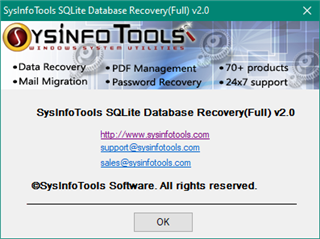How to avoid TMs corruption? If corrupted, is TM Repair the only available tool to try to recover its content?
RWS Community
How to avoid TMs corruption? If corrupted, is TM Repair the only available tool to try to recover its content?
I think the first thing to note is that an SDLTM is quite robust. However, there are things you can do that might be the cause of your TM getting corrupted. For example:
If it does become corrupted then TM Repair can often repair it. But not always. If the TM is too badly corrupted it may not be possible to recover it at all. I have had limited success using a tool called SysinfoTools SQLite Database Recovery:

But it wasn't always straightforward, but with a combination of this tool, an export to a text file, then some regex cleanup, and I have been able to recover large text only translation units which is better than nothing.
So the other important message to take from this is backup, backup, backup! I'd recommend running a backup when Studio is closed and not in real-time as you use it, maybe at the end of each day as you see fit. I'd also recommend you export to TMX as well from time to time. Since a TMX is a flat text file it's much easier to recover data from it and make it available in a variety of tools.
Paul Filkin | RWS Group
________________________
Design your own training!
You've done the courses and still need to go a little further, or still not clear?
Tell us what you need in our Community Solutions Hub

I think the first thing to note is that an SDLTM is quite robust. However, there are things you can do that might be the cause of your TM getting corrupted. For example:
If it does become corrupted then TM Repair can often repair it. But not always. If the TM is too badly corrupted it may not be possible to recover it at all. I have had limited success using a tool called SysinfoTools SQLite Database Recovery:

But it wasn't always straightforward, but with a combination of this tool, an export to a text file, then some regex cleanup, and I have been able to recover large text only translation units which is better than nothing.
So the other important message to take from this is backup, backup, backup! I'd recommend running a backup when Studio is closed and not in real-time as you use it, maybe at the end of each day as you see fit. I'd also recommend you export to TMX as well from time to time. Since a TMX is a flat text file it's much easier to recover data from it and make it available in a variety of tools.
Paul Filkin | RWS Group
________________________
Design your own training!
You've done the courses and still need to go a little further, or still not clear?
Tell us what you need in our Community Solutions Hub
